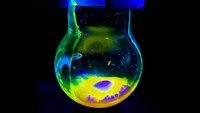Advertisement
Grab your lab coat. Let's get started
Welcome!
Welcome!
Create an account below to get 6 C&EN articles per month, receive newsletters and more - all free.
It seems this is your first time logging in online. Please enter the following information to continue.
As an ACS member you automatically get access to this site. All we need is few more details to create your reading experience.
Not you? Sign in with a different account.
Not you? Sign in with a different account.
ERROR 1
ERROR 1
ERROR 2
ERROR 2
ERROR 2
ERROR 2
ERROR 2
Password and Confirm password must match.
If you have an ACS member number, please enter it here so we can link this account to your membership. (optional)
ERROR 2
ACS values your privacy. By submitting your information, you are gaining access to C&EN and subscribing to our weekly newsletter. We use the information you provide to make your reading experience better, and we will never sell your data to third party members.

It’s not magic, it’s acoustic levitation. The two metal probes emit and reflect sound waves that trap this liquid droplet in midair. Franziska Emmerling uses the effect to study crystallization without interference from container walls, which can influence the rate of crystal formation (Cryst. Growth Des. 2014, DOI: 10.1021/cg501287v). “In a typical experiment, we use an under saturated solution of a certain compound,” she says. “During the experiment, solvent evaporates from the droplet and the saturation level increases leading to nucleation and then crystallization.” In this photo, however, they’re just levitating blue ink to demonstrate the apparatus.


Emmerling (@FranEmmerling) submitted this photo as part of the #RealTimeChem photo contest. The two runners-up in the Reactions category were Henry Powell-Davies (@hpowelldavies) with his balloon reaction and the Townsend lab at Vanderbilt (@Townsend_Lab) with this well-composed flask shot.
Do science. Take pictures. Win money. Enter our photo contest here.
For more Chemistry in Pictures, visit our new home on cen.acs.org.
Related C&EN Content:






Join the conversation
Contact the reporter
Submit a Letter to the Editor for publication
Engage with us on Twitter